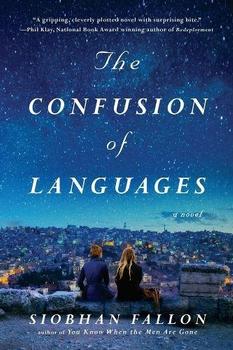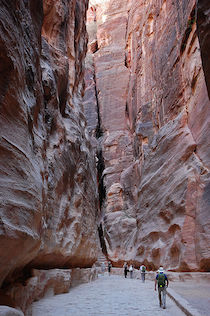Summary | Excerpt | Reading Guide | Reviews | Beyond the Book | Read-Alikes | Genres & Themes | Author Bio

This article relates to The Confusion of Languages
 Petra, the ancient city that is one of the Seven Wonders of the World, features in The Confusion of Languages as one of the sights that Margaret longs to visit.
Petra, the ancient city that is one of the Seven Wonders of the World, features in The Confusion of Languages as one of the sights that Margaret longs to visit.
The remains of Petra, once a bustling city more than 2,000 years ago, were rediscovered in the early nineteenth century by a Swiss explorer, Johann Ludwig Burckhardt. It is now an ongoing project for archaeological digs and is a UN World Heritage site. The city was inhabited by the Nabataeans - originally a nomadic tribe that settled in the region around the 6th century BCE - and was central on the trade route between East and West. According to the American Museum of Natural History, "Commercial traffic to and from Petra steadily increased from the first century BC to the mid-first century AD, to keep up with the growing demand for luxury goods in Rome, Greece and Egypt."
 In desert land, the city flourished because of the Nabataeans' ways of capturing and corralling water for use. They prospered by helping travelers along the route with rest stops and food, and they traded their knowledge of the desert landscape for riches. Travelers also paid the equivalent of customs taxes for safe passage.
In desert land, the city flourished because of the Nabataeans' ways of capturing and corralling water for use. They prospered by helping travelers along the route with rest stops and food, and they traded their knowledge of the desert landscape for riches. Travelers also paid the equivalent of customs taxes for safe passage.
Petra flourished for a long time until it was captured by the Romans and became part of the Roman Empire in A.D. 106. Petra reached the height of its glory around A.D. 700. Over subsequent years, the rise in sea trade routes and the many devastating earthquakes in the region lead to its eventual fall.
 Today the ruins mainly feature spectacular carvings and monuments carved on red sandstone cliffs; these were mostly dedicated to the rulers and the gods. Most of the architecture is a mix of indigenous Nabataean style mixed with Greco-Roman elements. Crenelated structures, built up in a number of tiers, is a prominent feature of Nabataean architecture and at Petra these were built as fortification to signify strength.
Today the ruins mainly feature spectacular carvings and monuments carved on red sandstone cliffs; these were mostly dedicated to the rulers and the gods. Most of the architecture is a mix of indigenous Nabataean style mixed with Greco-Roman elements. Crenelated structures, built up in a number of tiers, is a prominent feature of Nabataean architecture and at Petra these were built as fortification to signify strength.
The Nabateans were sun worshippers and the architecture, especially at Petra, brings this facet out brilliantly. Architectural and archaeological research has shown that during the sunsets on the summer and winter solstices and autumnal and vernal equinox, sunlight enters the far reaches of the most spectacular of the Petra monuments, the Urn Tomb.
Petra
The Siiq, Path to Petra
Tomb of a Roman Soldier
Filed under Places, Cultures & Identities
![]() This "beyond the book article" relates to The Confusion of Languages. It originally ran in August 2017 and has been updated for the
June 2018 paperback edition.
Go to magazine.
This "beyond the book article" relates to The Confusion of Languages. It originally ran in August 2017 and has been updated for the
June 2018 paperback edition.
Go to magazine.
Information is the currency of democracy
Click Here to find out who said this, as well as discovering other famous literary quotes!
Your guide toexceptional books
BookBrowse seeks out and recommends the best in contemporary fiction and nonfiction—books that not only engage and entertain but also deepen our understanding of ourselves and the world around us.